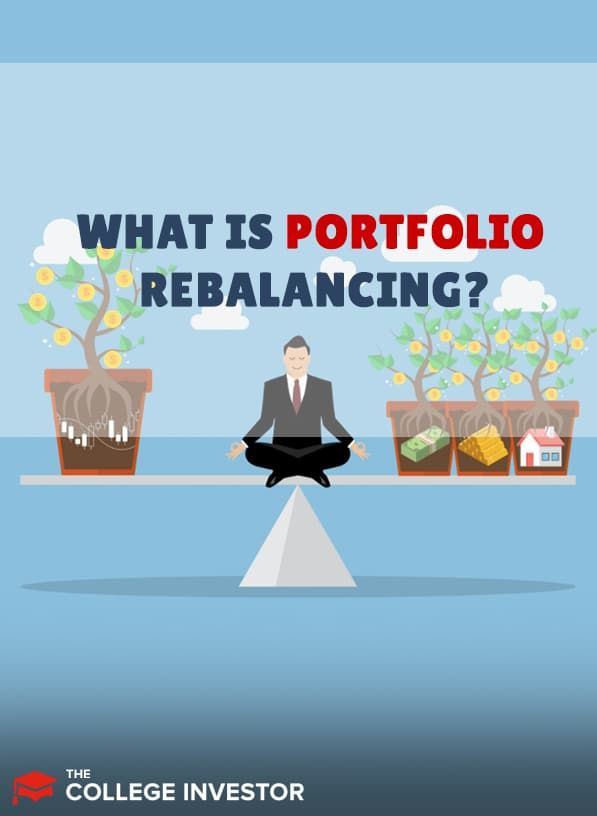
If you're a savvy investor, you may have taken the time up front to determine the appropriate asset allocation for your portfolio based on your risk tolerance and financial goals. But portfolio rebalancing is a critical part of maintaining an investment mix that aligns with your values.
If you're wondering what portfolio rebalancing is and why it matters, you aren’t alone. Many investors overlook this component of building an investment portfolio that serves their interests for the long-term. Let’s take a closer look at what it means to rebalance a portfolio and how it can impact your risk and returns.
What Is Portfolio Rebalancing?
When you first hear the term "portfolio rebalancing," you may conjure up an image of an intricate financial balancing act. And that assumption is not too far from reality.
Portfolio rebalancing is the act of reorganizing your asset allocation as your portfolio grows. Although it would be ideal if your portfolio could rebalance on its own, that's not a possibility without the help of a robo-advisor or target-date fund.
Example Of Portfolio Rebalancing
Let’s say you determine that your ideal investment portfolio consists of the following:
It can be tempting to set up your portfolio and forget about it. But market fluctuations will inevitably throw your ideal asset allocation out of whack.
For example, imagine that over the next year large cap stocks significantly outperform bonds. You may glance at your portfolio 12 months from now to find that it consists of the following:
- 60% large cap stocks
- 20% international stocks
- 15% REITs
- 5% intermediate bonds
At this point, you’ll need to take the time to rebalance your portfolio by selling some of your large cap stocks and buying more intermediate bonds. Otherwise, your investments will continue to become more aggressive (and riskier) than you originally planned.
Unfortunately, it can be all too easy to forget about rebalancing for years. When you finally realize what is happening, you may find that your investment trajectory is dramatically off course.
Why Should You Rebalance Your Portfolio?
It may help to think of rebalancing as a choice made to stay on the course you’ve set for yourself. If you never rebalance your portfolio, you may be steering into uncharted territory as if you were a driver that decided to throw out the map while on a cross-country road trip.
And, more often than not, that uncharted territory is going to involve a bumpier ride due to a higher concentration of stocks. Over the long haul, stocks should outperform bonds which means that your portfolio will naturally become more weighted towards equities over time.
However, stocks are also much more volatile than bonds. So if you don't keep consistently rebalancing your allocation of stocks and bonds back to your target, you may find yourself suddenly dealing with much larger up and down swings in your portfolio.
Portfolio rebalancing becomes even more important the closer you get to retirement. At 25, you can probably deal with a bigger dip in your portfolio than you'd like. But if you'll need to withdraw your cash soon, you definitely want your mix of stocks and bonds to stay on target to avoid huge balance fluctuations from year to year.
How To Rebalance Your Portfolio
Rebalancing is a key part of building an investment portfolio that lasts. As you move forward, there are three different options that could work for your situation. Take the time to decide which option will work best for you and set up a system to regularly rebalance your portfolio.
DIY Rebalancing
It can feel a bit daunting. But it is absolutely possible to rebalance your portfolio by yourself.
If you choose to rebalance your portfolio yourself, Excel and Empower (formerly Personal Capital) are a few tools that can really help out. You’ll need to check in with your portfolio at least once a year to ensure that your portfolio stays on track.
It's important to note that a DIY portfolio rebalance can be a somewhat tedious process. This is especially true if you have multiple investment accounts. But if you want to give it a try, take a closer look at our full article.
Robo-Advisors
A robo-advisor can make the process of rebalancing a breeze. With the right robo-advisor, you can skip the process of sorting through your investments. Instead, you can set up a plan that provides parameters for your ideal asset allocation. With that information, a robo-advisor can follow through on the details for you.
Want to take advantage of this easier rebalancing opportunity? Here are a few of the best robo-advisors that can help you out!
These are just three of our favorite robo-advisors. If you want to rebalance regularly without the hassle, then take some time to find the best robo-advisor for your situation.
Target-Date Funds
If you want the best of both worlds, then target date funds could be the right solution for your rebalancing needs. Although you won’t working with a robo-advisor, you won’t have to dive into the nitty-gritty details of buying and selling assets either.
A target date fund is based on your expected retirement date. Essentially, the fund will rebalance itself to match the appropriate risk for your age. This can provide a happy medium for investors that are comfortable investing in mutual funds.
Final Thoughts
Rebalancing is an important component of building an investing strategy that is successful in the long term. Take some time to consider your options to consistently rebalance your portfolio and choose a strategy that aligns best with your investment preferences.

Sarah Sharkey is a personal finance writer covering banking, insurance, credit cards, mortgages and student loans. She has written for numerous finance publications, including MagnifyMoney, Business Insider and ChooseFI. Her blog, Adventurous Adulting, helps young adults get a handle on their finances.
Editor: Clint Proctor Reviewed by: Chris Muller
